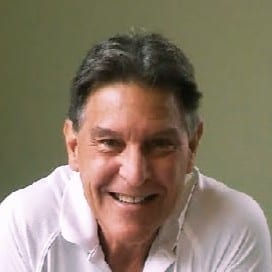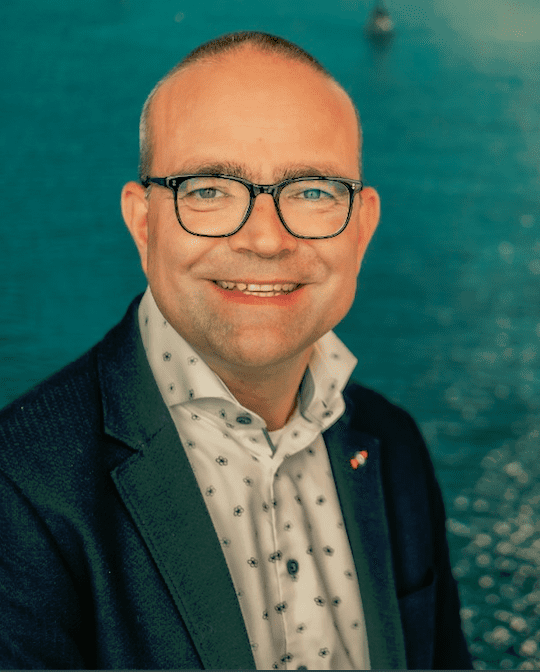The POWER Interview: Ventolines' Execs Discuss Offshore Wind
Ventolines, known for clean energy projects in Europe and for supervising installation of the first U.S. offshore wind turbines at Block Island off the Rhode Island coast, on Dec. 16 announced it will take a leading role on Mayflower Wind, an 804-MW project in the waters off Massachusetts.
Ventolines, headquartered in the Netherlands, also announced it has opened a U.S. office in Boston, Massachusetts. The company also has hired Lorry Wagner, well-known for promoting wind energy on Lake Erie.
Wagner and Thibaut de Groen, the project lead on Mayflower Wind, provided POWER with more information about the company’s work on the installation, and about the offshore wind sector.
POWER: What is the significance of Mayflower Wind?
Wagner: This project signals the start of large-scale offshore wind energy in America. And our involvement is an example of how the industry is building on our experience in Europe, where we have 4,543 grid-connected offshore wind turbines in 11 countries.

Here in the U.S. there are seven offshore turbines so far. Mayflower stands to add 50-100 turbines and 800-1,200 megawatts [MW] to that. And that’s just in the first phase. It’s at least 27 times larger than the 30-MW Block Island wind farm, which the U.S. offshore industry started with.
The Mayflower lease area is big enough for over 1,600 MW by phase two. At that point Mayflower will generate enough clean electricity for half-a-million Massachusetts homes. It’s going to help develop a skilled offshore wind workforce in New England. It will create U.S. manufacturing jobs and help build a U.S. supply chain, as well as saving as much greenhouse gases that 5.3 million cars emit.
POWER: What is your role in the project?
Wagner: Mayflower is a joint venture of Shell, which has more than 40 years of offshore energy experience in the Gulf of Mexico and the North Sea, and Ocean Winds [a partnership of EDP Renewables, the world’s fourth-largest producer of wind energy, and energy superpower ENGIE]. Their staff will manage the project, and we will contribute our experience in offshore wind.
Specifically, we’re providing T&I [transport and installation} expertise on the electrical substation, the wind turbine foundations, the electrical cables to collect the energy and get it to shore, and the wind turbines themselves.
POWER: Why do you think offshore wind has been late to develop in the U.S.?
de Groen: Europe is denser and so has less affordable land for onshore wind turbines, shorter distances to population centers, and higher energy prices in general. This has meant that Europe has had the greatest appetite for offshore wind’s unique value.
As a result, in Europe we now already have a trained workforce, a well-developed offshore wind manufacturing sector and supply chain, the necessary port infrastructure, and the right installation vessels.

All this will come in the United States in time. Offshore wind blows relatively strong all day and can be developed close to major American cities. That makes the investment worth it, especially when the alternative is transmitting onshore wind energy long distances, and the necessary high-voltage transmission lines are lacking.
And of course, climate change is such an enormous problem to solve that we need multiple different technologies, which each have their own strengths.
POWER: What have you learned in Europe that will help scale the offshore industry in the U.S.?
de Groen: Some oil and gas vessels can be repurposed for offshore wind energy. Indeed, some of the biggest offshore wind players in Europe started in oil and gas, such as Denmark’s DONG Energy [which stood for Danish Oil and Natural Gas], now named Ørsted; and Norway’s Statoil, now Equinor.
This will help address the shortage of vessels to comply with the Jones Act, which requires U.S.-flagged vessels between the port and construction site. Instead we have learned in the Netherlands to use feeder barges to shuttle components from land to a single installation vessel offshore. And that is a major challenge, to move such large pieces of equipment in changing seas without damaging them.
We’ve faced many other challenges in all phases of building offshore wind farms. That includes understanding the concerns of local stakeholders such as the fishing industry, surveying sites for the foundations deep in the ocean, as well as negotiating with the manufacturers what percentage of time the turbines will be available to generate power and how much power they will generate at wind speeds typical for that location.
Before the equipment even reaches the U.S., we have inspectors verify it at the factories in Europe, where many of these components will continue to be made.
POWER: What other work are you doing in renewable energy?
Wagner: Mayflower Wind is actually the fifth offshore wind project that we are involved in here in the U.S., starting with Block Island. That also includes consulting on the turbine acquisition for Skipjack Wind Farm off the Maryland coast, developed by Ørsted; South Fork Wind off New York’s Long Island, a partnership between Ørsted and Eversource; and another project on which our role has yet to be announced.
de Groen: In the Netherlands, we’re currently involved in 1,500 MW of major onshore wind projects, including the country’s largest, Windplan Groen. And we’re building the world’s largest freshwater wind farm, Windpark Fryslân, right now. We have a lead role in all aspects, from early development to asset management. We have 89 turbines and a large artificial nature island under construction in a lake, for a total of 383 MW.
In addition, Ventolines is involved in developing several large-scale solar parks, accounting for more than 350 MW, and multiple energy storage projects.
We now have nearly 100 experts working from our headquarters in Almere, close to Amsterdam, providing development, stakeholder engagement, contracting, legal counsel, system integration, construction, market advice, and asset management for all phases of wind, solar and storage projects. Our formal entry into the U.S. market is the next logical step in our company’s evolution.
—Darrell Proctor is associate editor for POWER (@POWERmagazine).